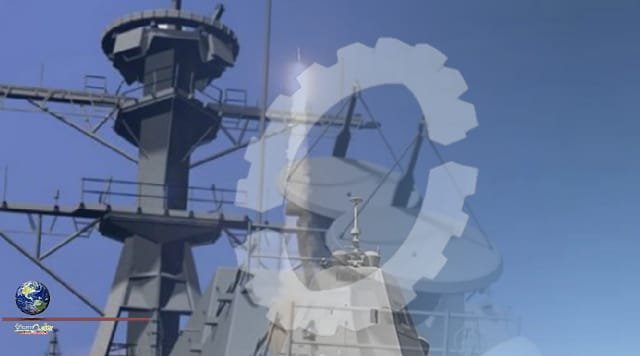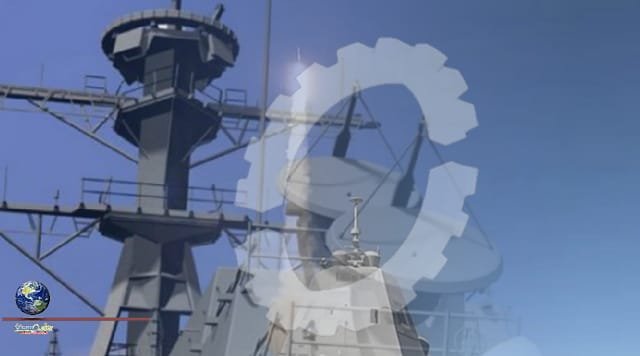Technological advances have enabled developers to engineer weapons with improved capacity, however many of them rely upon much greater amounts of expeditionary power Navy ships Hypersonics will be firing massive, high-powered, scalable lasers to strike enemy ships, destroy drones and possibly even burn through the metal of an inbound ballistic missile or ICBM.

Future surface ships will be operating new generations of highly sensitive, long-range high energy-density radar systems 35-times more precise than existing systems. Destroyers, cruisers and other warships will be firing larger, faster, longer-range and more precise missiles, even including deck-launched hypersonics, new sensors, high-speed, AI-enabled computing and command and control systems will change current paradigms for maritime warfare by exponentially improving lethality, range and manned-unmanned multi-domain networks.
Technological advances have enabled developers to engineer weapons with greatly improved capacity, however many of them rely upon much greater amounts of expeditionary power. Therefore, identifying innovations which support the need for expeditionary high-density energy output, storage and distribution, has for years been a major focus for Navy developers.
A ship’s electric drive propulsion system can help support this, which is part of why electric-drive systems are built into Navy’s Zumwalt-class destroyers and other surface platforms. Additional on-board power-generation capacity, fortified by large generators, can of course be measurably enhanced by innovations with improved on-board power management technology.
This is why Northrop Grumman is refining, integrating and upgrading its Integrated Power and Energy System solution, technology engineered to store, manage and efficiently distribute electrical power onboard warships. Using an energy magazine, IPES is able to aggregate, store and distribute electrical power as needed to multiple systems from a single location.
Otherwise separated technologies on board a ship such as radar, weapons or computing typically draw power from different individual systems, something which increases weight and space and results in resources dedicated to one load that otherwise cannot be utilized.
IPES is intended to optimize and massively improve expeditionary, shipboard power, while increasing distribution efficiency and greatly lowering the hardware footprint. This dynamic, referred to by the military services as SWAP for Space, Weight and Power, seeks to address the difficulties of finding sufficient “space” on a ship given the number of systems it needs to support.
“Multi-function power systems have SWAP savings and will start to extend the capability by managing the energy flow within the various pieces of the system,” Matthew Superczynski, Chief Engineer for Northrop Grumman’s Power/Control Systems, told TNI in an interview.
As is often the intent with specifically engineered industry efforts such as Northrop’s IPES, the goal is to meet Navy requirements for ship combat performance for both the near and far term by ensuring sustained modernization.
Northrop’s push for sustained modernization with IPES is aimed at meeting Navy requirements as they evolve and aligning with the service’s modernization strategies.These strategies, outlined in detail at the Navy’s Sea Air Space Symposium by Ryan Moore, Deputy Program Manager, Integrated Weapons Systems, seek to expedite breakthrough modernization through a continuous maturation process enabled by progressive technological enhancements.
This is designed to both bring optimal solutions in the near term while also place platforms on a course for fast-paced modernization.
“As opposed to spending all this money and time to develop an integrated set of tools that our warfighter will need 60 years down the road, what we want to do is rapidly develop and build,” Moore said at SAS.
As part of this discussion, Moore emphasized a need to deliver optimal systems at the “point of sale,” while also placing systems on an auspicious path to rapid modernization over time through the use of common technical standards.
Navy weapons developers are looking at innovative methods of consolidating electrical power on board ships moving into the future to empower new generations of weapons, sensors and computing for future maritime warfare requirements. Much of this naturally relies upon the continued production and storage of power and energy on board ships now being built with newer, more advanced technologies.
Destroyers, for example, are armed with lasers, longer-range sensors, more sensitive radar systems and more elaborate, high-speed networking and computing, all of which require power, electricity and the efficient distribution of energy.
With this in mind, the Navy now has many systems and research and engineering efforts underway to optimize ship power development by finding the right blend of Size, Weight and Power (SWAP) on board ships. In order to achieve this, Navy weapons developers are looking to build a much smaller and more efficient hardware footprint to maximize available space or “real estate” on board a ship.
This can to a large extent be achieved through the application of common hardware and software standards and new technologies specifically designed to generate, store and distribute on-board electrical power Hypersonics to a much greater extent than what has previously been possible.
Navy developers have long emphasized the continued need to engineer newer, smaller form-factor, highly efficient mobile energy storage and distribution, in part with a specific mind to supporting breakthrough high-power laser weapons and radar, among other things.
These technologies, and the concepts of operation associated with them, continue to be defining elements of the Navy’s DDG 51 Flight III destroyer program and now emerging DDG(X) effort.
One particular industry effort among many seeks to integrate promising cutting edge systems which are already proven and combat ready with breakthrough technologies capable of paradigm-changing methods of energy storage and distribution. The technology, Integrated Power and Energy Systems (IPES), is designed to maximize performance in the near and far term, while also Hypersonics greatly reducing the “risk” regularly associated with longer-term developmental programs.
Northrop Grumman’s l strategy, developers explain, is to offer technologies and architectures fully aligned with the Navy approach to these ships, an effort which involves an interesting blend between new innovations and upgradeable, cutting-edge now operational systems. This kind of thinking is the impetus behind why Northrop Grumman engineered their Hypersonics Multifunction Prime Power System to both function in the near term and also upgrade over time to ensure continued modernization for decades into the future.
“We have an architecture in place that can support current and future weapons and sensor systems that are a key piece of DDG(X). We are in a position now to put this in the DDGX platform,” Matthew Superczynski, Chief Engineer for Northrop Grumman’s Power/Control Systems, told Warrior in an interview.
Kris Osborn is the Defense Editor for the National Interest. Osborn Hypersonics previously served at the Pentagon as a Highly Qualified Expert with the Office of the Assistant Secretary of the Army—Acquisition, Logistics & Technology. Osborn has also worked as an anchor and on-air military specialist at national TV networks. He has appeared as a guest military expert on Fox News, MSNBC, The Military Channel, and The History Channel. He also has a Master’s Degree in Comparative Literature from Columbia University.
Source: This news is originally published by warriormaven
